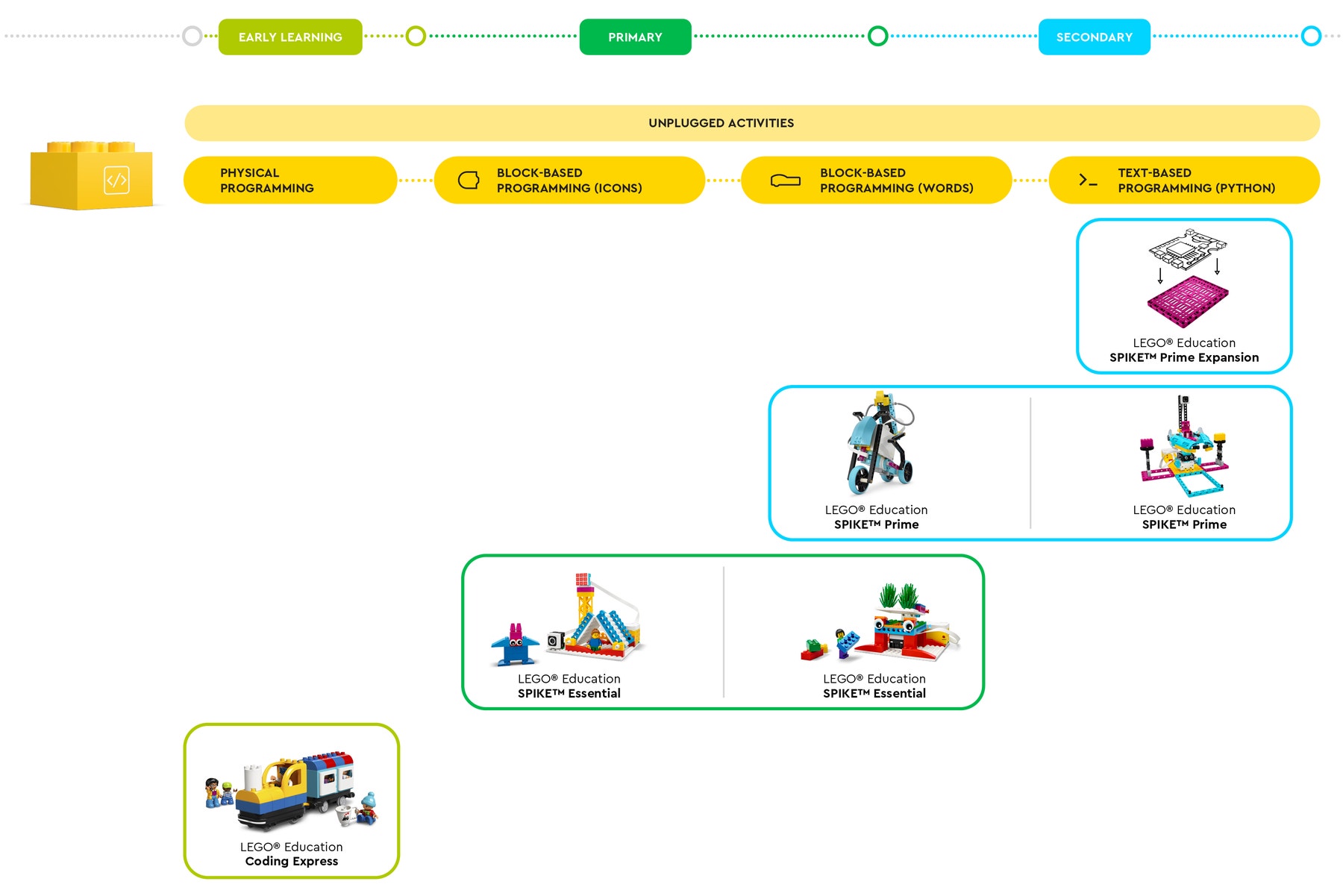STEM Coding and Programming in Education: A Complete Guide
As our world becomes more tech-orientated, coding and programming have become buzzwords in the education sphere. More than just the buzz, bringing programming into the classroom has become a vital component of STEM learning as we consider the future of automation and AI. Similar to math and language, a foundational knowledge of coding for students can support multiple career pathways and equip students with information and skills needed to survive and thrive in tomorrow’s world.
Why are coding and programming important in STEM?
At LEGO® Education, we believe it is important for students to have the opportunity to create and problem solve with tools that can grow with them. To continue to develop skills and knowledge in coding over time, students need opportunities to use a variety of developmentally appropriate programming languages. It is important for students to grow their programming abilities over time to prepare them for the tech-focused future. Students use a variety of types of code to create programs to solve problems.
Benefits of learning coding and programming
Learning to program allows students to explore and develop computational thinking skills. Preparing students to be computational thinkers means preparing them to understand how to formulate problems to be carried out by a computer, developing skills in algorithmic thinking, and decomposition and modeling phenomena. These skills prepare students for a variety of STEM careers. Exposing students to solving problems through programming allows them to learn and experience the thinking skills required to create problem-solving algorithms, preparing them for future careers.
Exposing students to a variety of programming languages
At LEGO Education, we believe that it is important to meet students where they are in their learning and help them grow further. Learning to code and creating programs to solve problems is no different. We want students to experience a variety of types of coding.
A coding language is a system of notation that allows someone to write a computer program. Most of these languages are text-based, but some are graphical. The most commonly used coding languages in STEM education are Scratch, Python, JavaScript and HTML.
At LEGO Education we focus on exposing students to unplugged coding, physical coding, icon-based programming, word-block based coding, and python text-based programming.


Unplugged coding activities
Appropriate for all ages, unplugged activities allow students to experience concepts and ideas without a device. Students are often focused on learning how to code something, but struggle to understand the concept behind the code. Starting with an activity that simulates the code without the device allows students to better understand a concept. An example would be to have student experience looping through a hands-on activity before teaching them how to code a loop in their program.
Physical programming
Physical coding is a great place to start early learners or new coders to be able to create simple codes without a device, allowing students to explore and make meaning through play. An example of physical coding would be using a learning solution like Coding Express that allows students to code the movements of the train using a brick without needing a device connected. This prepares students to move from a concrete representation to graphical coding later. An example like this allows students to explore concepts like conditionals to understand how a conditional works without needing to learn how to code the conditional.
Icon-based programming
Appropriate for younger students or early coders, Icon-block programming will allow students to create strings of code. Because the blocks are going to have an image without words, starting emergent readers with icon-based programming takes away potential barriers that other programming languages might present. Programming with a learning solution like LEGO® Education SPIKE™ Essential allows students to learn how to create simple and complex programs that allows students to explore coding concepts further. It is a prefect first step into coding.
Word-block programming
Word-block coding allows students to still use a drag-and-drop coding experience to create a code stack. However, the inclusion of words on the blocks helps students start to understand how to write text-based code.
Scratch Programming is an example of a word-block coding. A free programming language and online community, Scratch is an educational tool aimed at learners between the ages of 8 and 16. Offering the opportunity to create interactive animations, stories and games, it’s used across the globe and is a great way to encourage kids’ interest in coding.
Here at LEGO Education, we use Scratch-based word-block program to code motors and sensors that can be used to build interactive robotic creations.
Text-based programming
Python
Widely regarded as the easiest programming language to learn, Python has a simple syntax and a large library of standards and toolkits that can help students get a handle on it. Python provides a start into text-based programming. As it’s the simplest option, Python is often the first programming language to be introduced in a STEM education.
At LEGO Education, we believe driving students to text-based programming allows them to unlock their full potential. There are no limitations to what students will be able to create and program to solve a problem.
How to bring coding and programming to the classroom
Students learn best when they can be hands-on and experience things for themselves, often through inquiry or trial and error. LEGO Education products facilitate this by giving kids the opportunity to explore and discover the joys of STEM education.
More specifically, when we’re talking about coding, one of the most effective ways to bring STEM into the classroom is with educational robotics such as our SPIKE products, which allow students to design, build and program robotic creations.